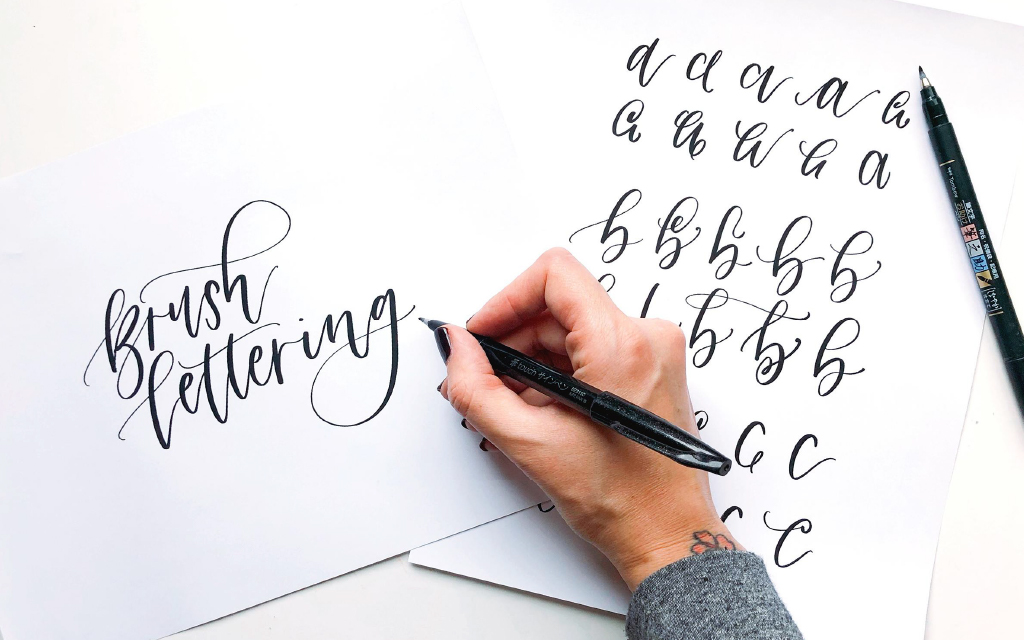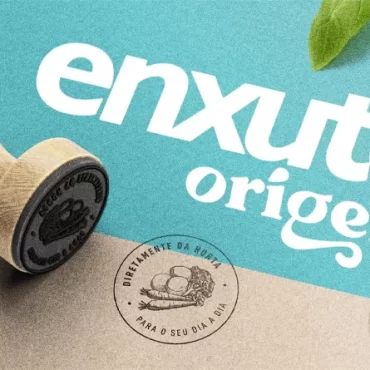Lettering fever: a new role for design

Get inspired
From time to time, some styles or behaviors appear in certain areas of society, such as sports, politics, fashion and design. They start to transform the context in which they are inserted, marking an era or a generation. This is the case with lettering, a fever driven by teenagers, which has been showing signs that it is here to stay.
This new trend impacts much more than the daily lives of Generation Z. It can also have important consequences for the business world, in addition to several insights for other universes as well, especially design. But, if you’re not already familiar with that term, don’t worry. That is exactly what you will understand in this article.
What on earth is lettering?
This is not, strictly speaking, a new thing. Lettering is basically the ancient practice of calligraphy, which people wrote letters or words manually, testing different types of typography and ways of laying out shapes on paper. The main difference is that nowadays this practice became popular and what was once an activity carried out exclusively by professionals, has now become part of many people’s daily lives.
But, if you still haven’t been able to visualize what the lettering is, just do a quick search on social networks and you will understand the dimension of this phenomenon. Whether as a tool to de-stress in free time or to make studies and school summaries more beautiful and fun, the fans of this practice grow every day.
The lettering has also been used for other purposes. It expands on a much larger personal organization movement, which can easily be seen, for example, in planners and bullet journals, which are handmade ways to visually organize your week, month, and even the whole year (exactly, nothing on google calendars!).

What does this reveal about design?
The first insight concerns the enhancement of visual tools for solving problems. People have already realized that the way designers work is very meaningful for creating solutions in several areas and that is why Design Thinking has become so famous.
Now, Visual Thinking is also gaining momentum, because it goes beyond the logic of design thinking, being an even broader way of expressing ideas. The concept of this practice is that the information is translated in the most visual way possible, because, in this way, it is more easily assimilated. Did you understand why abstracts with lettering and other aesthetic resources, such as mind maps, are so used today?

In This way, we can think of two main consequences for the design world. The first is that the area is being more valued, given that people are understanding the importance of good aesthetic planning. But, on the other hand, design is moving towards a new moment, after all, it is no longer enough to just do something pleasing to the eye, as this is an increasingly common activity.
But that does not mean that anyone can carry out the designer’s work. Today, the area is moving towards an increasingly strategic place, where graphic resources do not have an end in themselves. They are used as part of a plan, which involves other elements, in order to bring cohesion to make the communication strategy more effective.
What about the business world?
Another insight comes from the curious fact that stationery items and manual activities are being sought after at a time when the world is experiencing intense digitalization. It is clear that digital transformation is a path of no return, but it is also visible that it does not reach all people in the same way.
And this shows a strong counter-trend, the appreciation of offline, which, in 2019, was one of the topics listed in the Euromonitor report, which depicts global consumption trends. It revealed that some people feel pleasure when they find themselves disconnected – basically, the opposite of Fear Of Missing Out – FOMO.
Thus, there is also a recovery in the market for stationery and arts. According to the Estadão newspaper, several businesses have recently emerged in this segment. And this rise in lettering has been pushing traditional stores, which have already expanded their range of products to serve this new niche of customers.
The practice of lettering today, is further proof that companies need to always be looking to trends in behavior and consumption. After all, who would expect a return to the past in a world increasingly adept at the practicality of digital? And, for brands that want to anticipate even more, there is already a signal that manual activities, such as planners, embroidery and cooking, will be increasingly valued.




